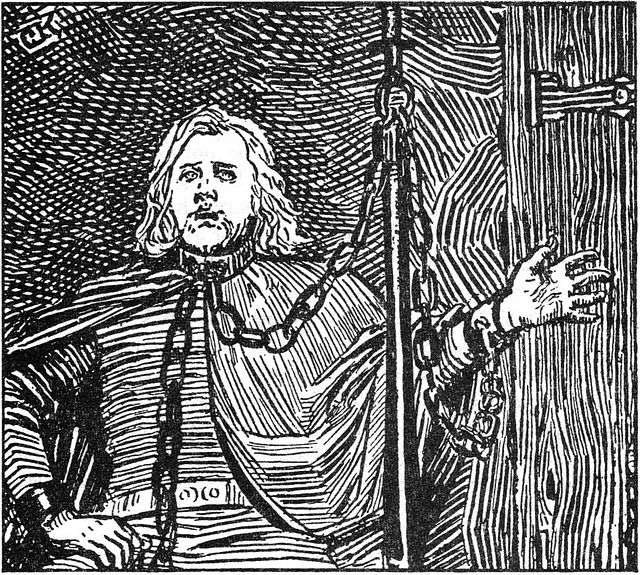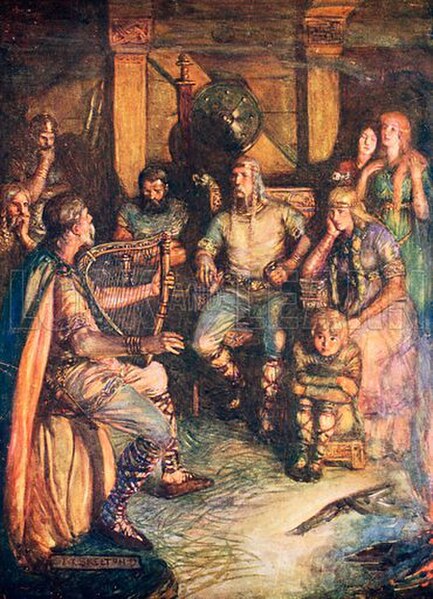A skald, or skáld is one of the often named poets who composed skaldic poetry, one of the two kinds of Old Norse poetry in alliterative verse, the other being Eddic poetry. Skaldic poems were traditionally composed to honor kings, but were sometimes extempore. They include both extended works and single verses (lausavísur). They are characteristically more ornate in form and diction than eddic poems, employing many kennings, which require some knowledge of Norse mythology, and heiti, which are formal nouns used in place of more prosaic synonyms. Dróttkvætt metre is a type of skaldic verse form that most often use internal rhyme and alliteration.
Bersi Skáldtorfuson, in chains, composing poetry after he was captured by King Óláfr Haraldsson (illustration by Christian Krohg for an 1899 edition of Heimskringla)
A minstrel sings of famous deeds by J. R. Skelton, c. 1910
Illustration from the 18th-century Icelandic manuscript NKS 1867 of Thor's fight with the World Serpent, the subject of early skaldic verses by Bragi Boddason and Úlfr Uggason
Snorri Sturluson, illustration by Christian Krohg (1899)
Old Norse poetry encompasses a range of verse forms written in the Old Norse language, during the period from the 8th century to as late as the far end of the 13th century. Old Norse poetry is associated with the area now referred to as Scandinavia. Much Old Norse poetry was originally preserved in oral culture, but the Old Norse language ceased to be spoken and later writing tended to be confined to history rather than for new poetic creation, which is normal for an extinct language. Modern knowledge of Old Norse poetry is preserved by what was written down. Most of the Old Norse poetry that survives was composed or committed to writing in Iceland, after refined techniques for writing were introduced—seemingly contemporaneously with the introduction of Christianity: thus, the general topic area of Old Norse poetry may be referred to as Old Icelandic poetry in literature.
The Fyrby Runestone tells in fornyrðislag that two brothers were "the most rune-skilled brothers in Middle Earth."
Drawing of the copper Sigtuna box with a dróttkvætt verse written in the runic alphabet
The Karlevi Runestone contains a dróttkvætt poem in memory of a chieftain.







